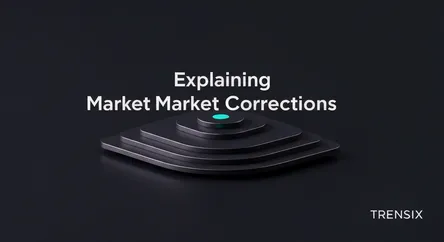Business
Explaining Market Corrections

A market correction is a price decline of 10% or more in a stock market index. Learn what causes these events and how they affect investors.
What is it?
A market correction is a significant, short-term decline in the value of a stock market index or a specific asset. By definition, a correction is a drop of at least 10% but not more than 20% from its most recent peak. It's a natural and relatively common event within the market cycle, often seen as a "breather" or a reset after a period of strong gains. Unlike a more severe bear market (a drop of 20% or more), corrections are typically shorter in duration, often lasting for a few weeks or months before the market resumes its upward trend.
Why is it trending?
The term 'market correction' becomes a trending topic during periods of increased economic uncertainty and market volatility. Factors like rising inflation, interest rate hikes by central banks, geopolitical conflicts, or disappointing corporate earnings can trigger a sell-off. After extended periods of market growth, or a "bull run," investors and analysts become more watchful for signs of a slowdown. Financial news outlets amplify this attention, making "market correction" a buzzword as people seek to understand the sudden downturn and predict its next move.
How does it affect people?
For investors, a market correction can be unsettling as it causes the value of their portfolios, including retirement accounts, to drop. This can trigger fear and lead to panic selling. However, seasoned investors often view corrections as a strategic buying opportunity to acquire stocks at a discount. For the broader public, while a correction might not have a direct daily impact, it can slightly dampen consumer confidence and serve as a stark reminder of the inherent risks associated with investing and the importance of maintaining a diversified financial strategy.